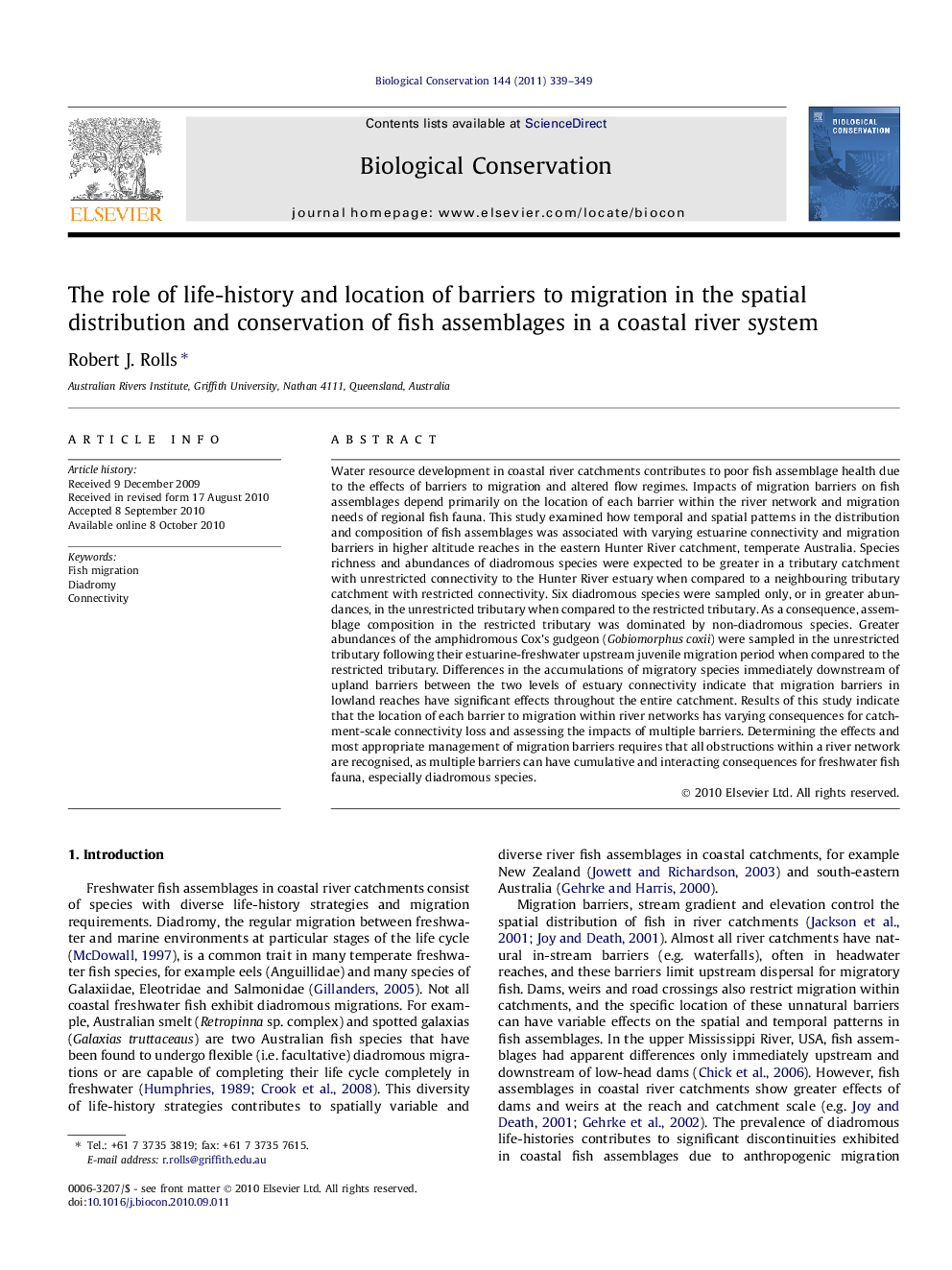| Article ID | Journal | Published Year | Pages | File Type |
|---|---|---|---|---|
| 4385693 | Biological Conservation | 2011 | 11 Pages |
Water resource development in coastal river catchments contributes to poor fish assemblage health due to the effects of barriers to migration and altered flow regimes. Impacts of migration barriers on fish assemblages depend primarily on the location of each barrier within the river network and migration needs of regional fish fauna. This study examined how temporal and spatial patterns in the distribution and composition of fish assemblages was associated with varying estuarine connectivity and migration barriers in higher altitude reaches in the eastern Hunter River catchment, temperate Australia. Species richness and abundances of diadromous species were expected to be greater in a tributary catchment with unrestricted connectivity to the Hunter River estuary when compared to a neighbouring tributary catchment with restricted connectivity. Six diadromous species were sampled only, or in greater abundances, in the unrestricted tributary when compared to the restricted tributary. As a consequence, assemblage composition in the restricted tributary was dominated by non-diadromous species. Greater abundances of the amphidromous Cox’s gudgeon (Gobiomorphus coxii) were sampled in the unrestricted tributary following their estuarine-freshwater upstream juvenile migration period when compared to the restricted tributary. Differences in the accumulations of migratory species immediately downstream of upland barriers between the two levels of estuary connectivity indicate that migration barriers in lowland reaches have significant effects throughout the entire catchment. Results of this study indicate that the location of each barrier to migration within river networks has varying consequences for catchment-scale connectivity loss and assessing the impacts of multiple barriers. Determining the effects and most appropriate management of migration barriers requires that all obstructions within a river network are recognised, as multiple barriers can have cumulative and interacting consequences for freshwater fish fauna, especially diadromous species.
